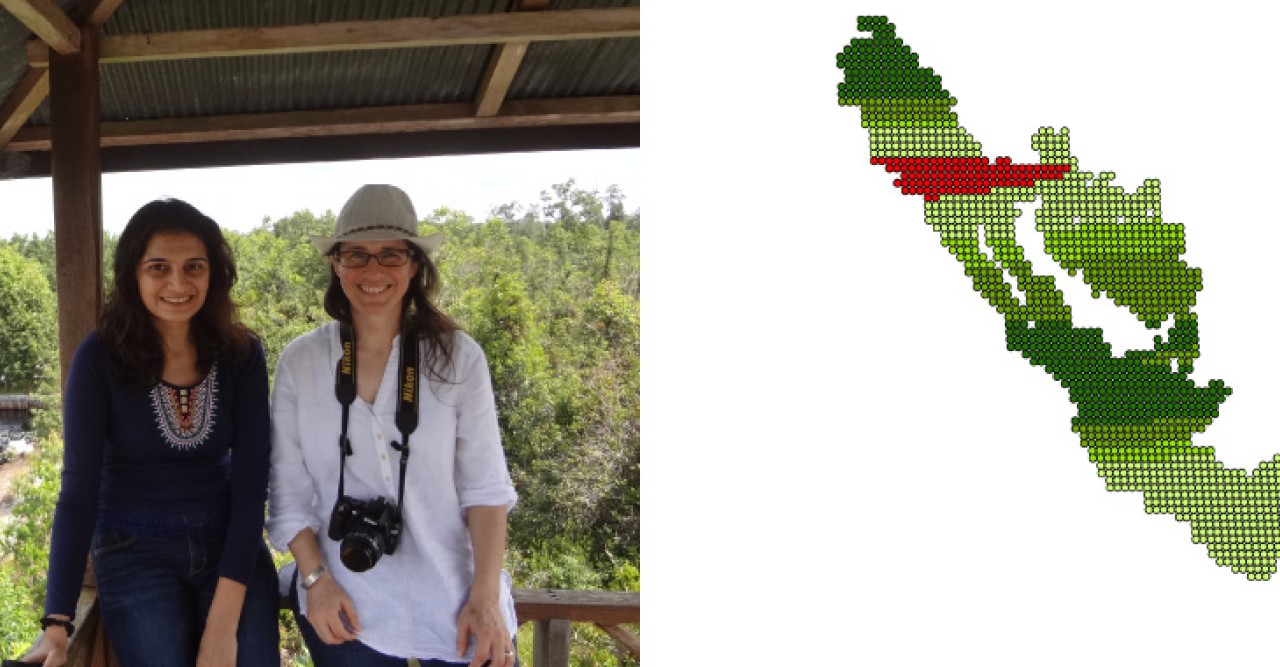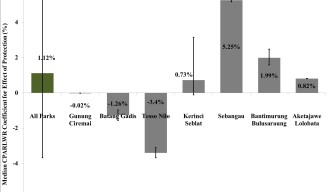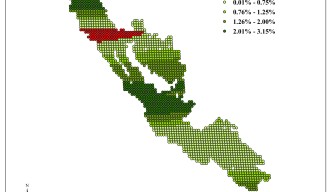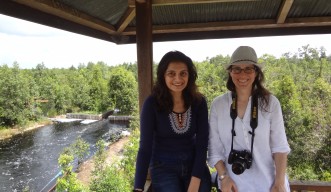Not All National Parks Are Created Equal

The forest cover on earth is shrinking at an alarming rate of around 50,000 square miles annually, roughly six times the size of Okinawa every month. To counter the loss of forests, policy makers often resort to designating certain ecologically sensitive areas as protected. New research published in the journal PLOS ONE by Dr. Payal Shah of the Okinawa Institute of Science and Technology Graduate University (OIST) and Dr. Kathy Baylis of the University of Illinois at Urbana-Champaign aims to better understand the effectiveness of protected areas in stemming the tide of deforestation. Using statistical tools from econometrics, this research provides a detailed look at how the effectiveness of such protected areas can vary significantly between different parks and even in different regions of the same park. Such studies can help policy makers understand where and whether or not protection has been successful, enabling them to more effectively design future conservation efforts.
For the study, the researchers focused on the conservation efforts in Indonesia, where there is widespread concern regarding the impact of ongoing deforestation on increasing carbon emissions and loss of habitat for biodiversity. In response, Indonesia witnessed an increase in total land area under protection of 4% between 1990 and 2010. However, Shah points out that protection does not necessarily guarantee reduction in deforestation. Political and other factors often result in protected areas being situated in regions that were never under threat of conversion for human use. This raises the question about the true impact of protected areas on deforestation.
To evaluate the effectiveness of protected areas, the researchers used state-of-the-art remote-sensing data to compare before and after measurements of forest cover within protected areas with matched similar areas that were not protected. This is a common method used to statistically extract the efficacy of the protected area. However, one of the biggest challenges in using this approach is finding comparable areas of land that are similar to protected areas in not only the extent of deforestation pressures, but also on their chances of being selected for protection. While the research uses standard methods to match protected areas with non-protected areas by including a wide range of variables that influence deforestation such as slope, elevation and proximity to cities, roads and rivers, there are still many unaccounted factors that can bias estimates.
In their study, the researchers borrow statistical tools from econometrics to identify whether their estimates are likely to be biased. They subsequently refined their estimates of protected area effectiveness by accounting for different sources of potential bias. Sources of potential bias in this case can include economic and political factors restricting land usage, lack of comparable matches from unprotected areas, and areas which do match but experience higher deforestation pressures.
Using these more advanced statistical methods, they uncovered that there is substantial variation on the impact of individual parks on reduction in deforestation. The national average effect of protected lands is an estimated 1.1% increase in forest cover. The research however shows that this number is misleading as individual park level estimates range from some parks experiencing a 3.4% decrease in forest cover to others experiencing a nearly 5.3% increase in forest cover.
The methods used provide a general framework for looking at the impact of a wide range of conservation policy and a systematic approach for exploring differences in conservation impact. This is especially important when looking at the most successful parks and areas within those parks for clues as to how policies should be most effectively implemented. Shah elaborates, “We find that the average effectiveness of protection often estimated at the country level can be misleading. As is evident from the case of Indonesia, certain parks may be very effective whereas others not so much.”
Shah further states, “We were surprised to find that even within a single park the impact of protection can vary substantially.” With multiple factors affecting forest conservation efforts, and the forest itself being a resource that is slow to recover, the need to refine policy to be as effective as possible is always pressing. Globally there is a growing impetus to conserve forests; in the 2010 meetings of the Convention on Biological Diversity held in Nagoya, Japan, countries committed to setting aside at least 17% of global terrestrial area under protection by 2020. Japan also boasts of an extensive system of natural parks, encompassing 14% of the country’s terrestrial area. Shah mentions that “it would be interesting to use the tools developed in this study to evaluate the effectiveness of the novel approach to forest conservation in Japan which uses a unique management system known as chiiki-sei or “park management by zoning and regulation.”
By Sean To
For press inquires, please contact media@oist.jp.
For press enquiries:
Press Inquiry Form
















